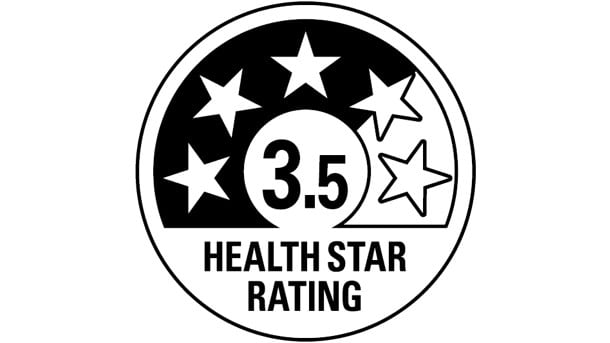“We conclude that there is good agreement between the HSR and the NPSC systems overall, but divergence in some food groups is likely to result in confusion for consumers, particularly where foods with low HSR [star ratings] are eligible to display a health claim,” said the authors.
The study was conducted by researchers from the George Institute for Global Health.
The HSR gives packaged foods a star rating based on their nutritional profile, ranging from 0.5 to five stars. The label is front-of-pack and designed to make it easier for consumers to compare similar packaged foods.
The NPSC is used to determine product eligibility to display nutrient content claims and/or health claims. Nutrient content claims revolve around nutrient content in a food, e.g. ‘low in fat’.
Health claims declare a relationship between a food and health condition. These are either general level health claims for health (e.g. good for digestive health) or high level health claims for a serious disease (e.g. Diets high in calcium may reduce the risk of osteoporosis).
In Australia, food manufacturers are permitted to use both of these systems to promote the health value of their products.
The researchers used data from the George Institute for Global Health’s FoodSwitch Database, which covers over 90% of the Australian packaged food market. Over 40,000 thousand packaged food products were covered in the study.
These were classified into categories, then HSR and NPSC values were calculated for each item. They then assigned HSR stars and NPSC scores to each item accordingly.
Products with more HSR stars are deemed healthier. Conversely, products with lower NPSC scores are more nutritious and more likely to be eligible to display a health claim.
From here, analysis of the agreement between HSR and NPSC results showed several misalignments.
Researchers said: “[Although] the HSR and health claims systems are generally well aligned in terms of allocated star ratings and eligibility to display health claims, there are some notable anomalies.”
“Approximately 6% of products were eligible to display a health claim despite [scoring less than 3.5 HSR stars]. Conversely, 2.7% were ineligible to display a health claim, despite scoring over 3.5 stars.”
Although the percentages look to be small, the experiment’s large sample size means that over 3,000 products are actually not aligning in terms of both systems.
“Such divergence in health claims and the HSR could result in confusion amongst consumers, [because] it translates into 3,488 products, a large absolute number,” said the authors.
“Around 14% of Australian food and beverage products display a health or nutrient content claim, and more than 3,500 food and beverage products display an HSR on-pack.”
“Ensuring that products with low star ratings are not eligible to display health claims is critical to minimise confusion and retain consumer trust in food labelling,” they added.
The importance of HSR and labelling
The HSR system is not without its merits.
Earlier this year, a University of Queensland study found that the implementation of HSR has had a positive impact on product reformulation.
Some manufacturers actively changed the calorie density of their products to healthier levels, possibly to reach a higher star rating.
“Prior to the introduction of HSR, the energy density of ‘thin corn cakes’ in 2013 was 2031 kJ per 100 g, and, at that stage, the product would have received 2 stars. Post-implementation of the HSR system on that product (in 2016), the energy density was 1680 kJ per 100 g, and the product displayed 3 stars,” wrote the authors.
Other Australian studies have also shown that graphic warning labels are the most effective in reducing consumer purchases of sugar-sweetened beverages (SSBs).
Elsewhere, further analysis of the New Zealand Starlight study results found that nutrition label use is likely to lead to healthier food purchases.
A better solution is required
Following the findings from their study, the George Institute researchers ispushing for a better option for nutrition labelling in order to avoid consumer confusion.
“Given the known difficulties that consumers already have with interpreting nutrition labelling, there is a strong case for ensuring better alignment between the two Australian government-endorsed systems to guide healthier food choices, especially for food categories where the alignment is most problematic,” they concluded.
Source: Nutrients
DOI: https://doi.org/10.3390/nu10081065
Evaluation of Alignment between the Health Claims Nutrient Profiling Scoring Criterion (NPSC) and the Health Star Rating (HSR) Nutrient Profiling Models. Available from:
Authors: Dunford, E. et. al.





